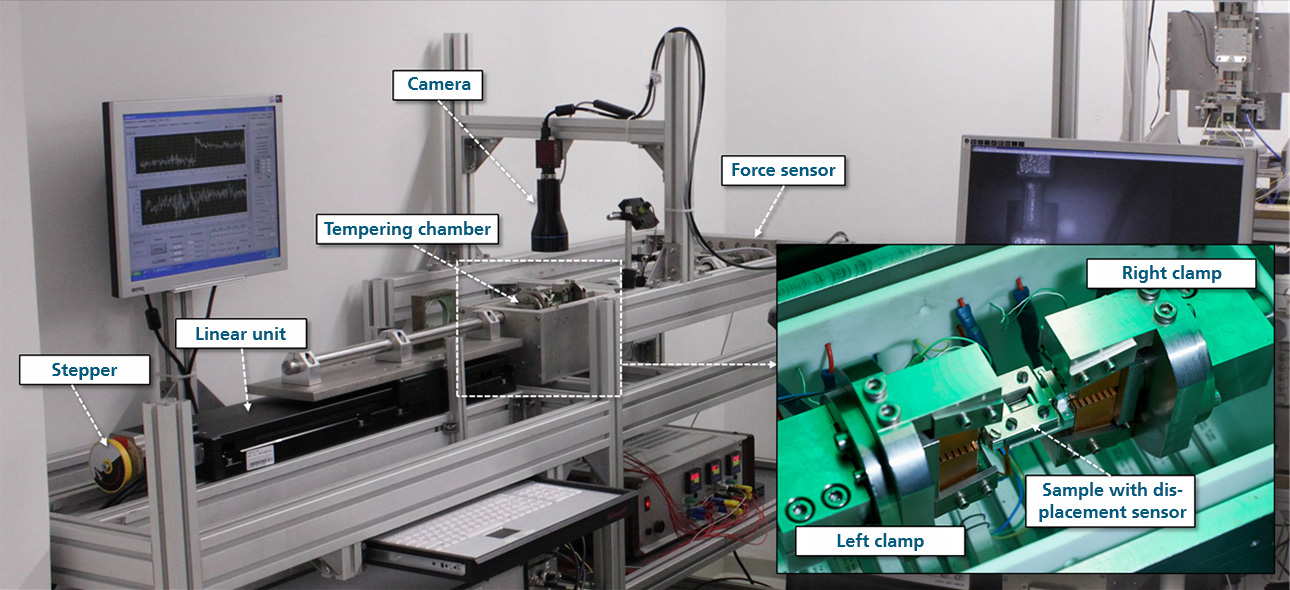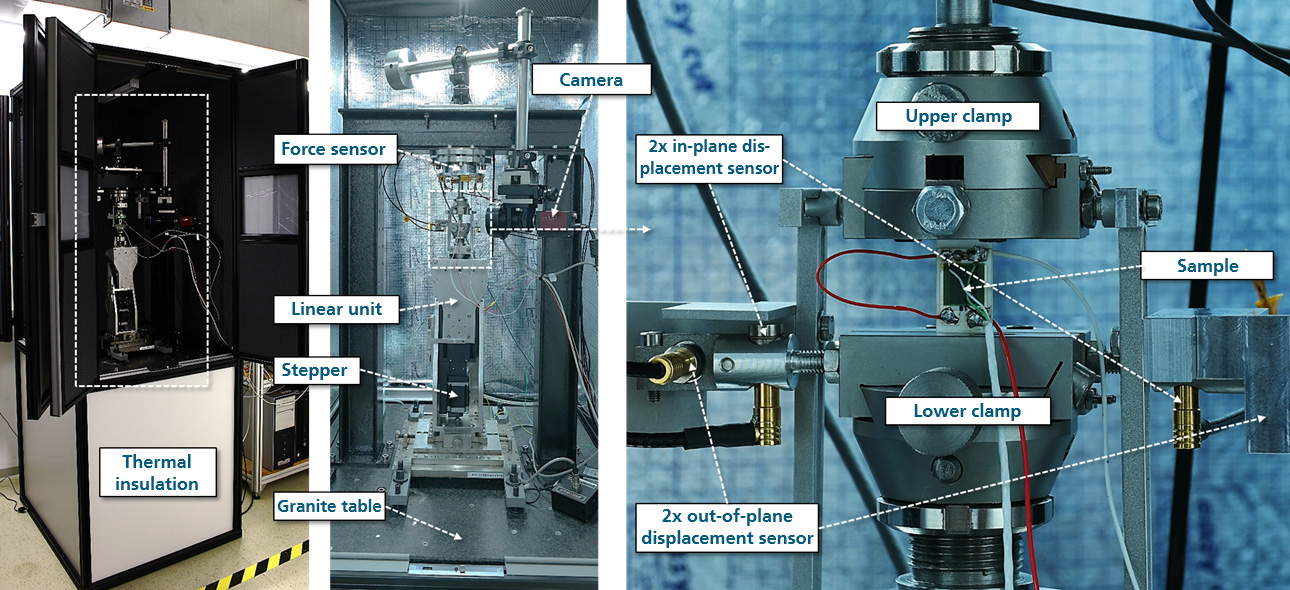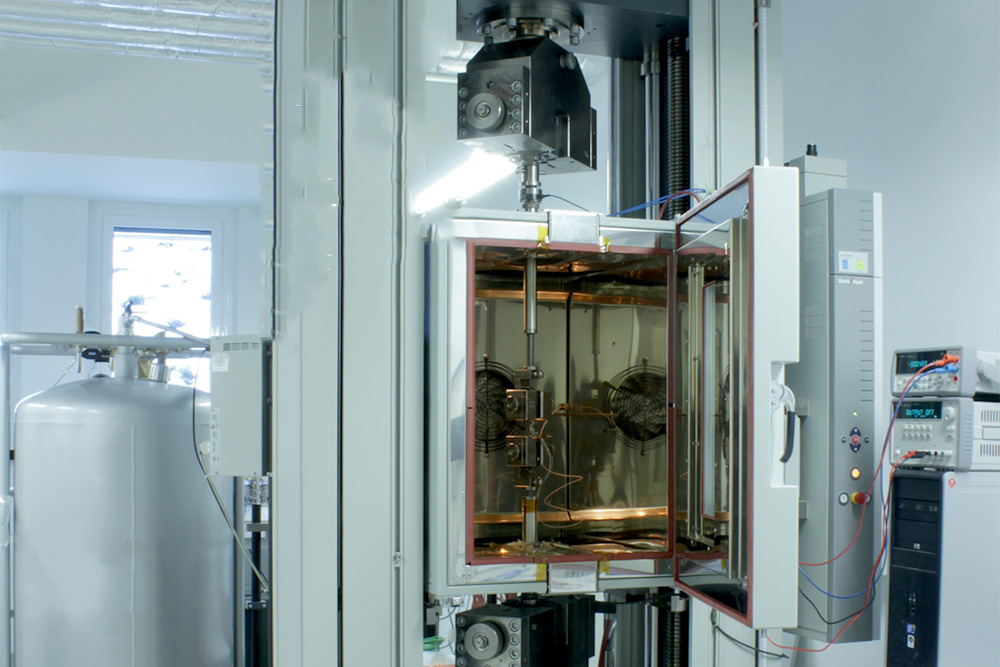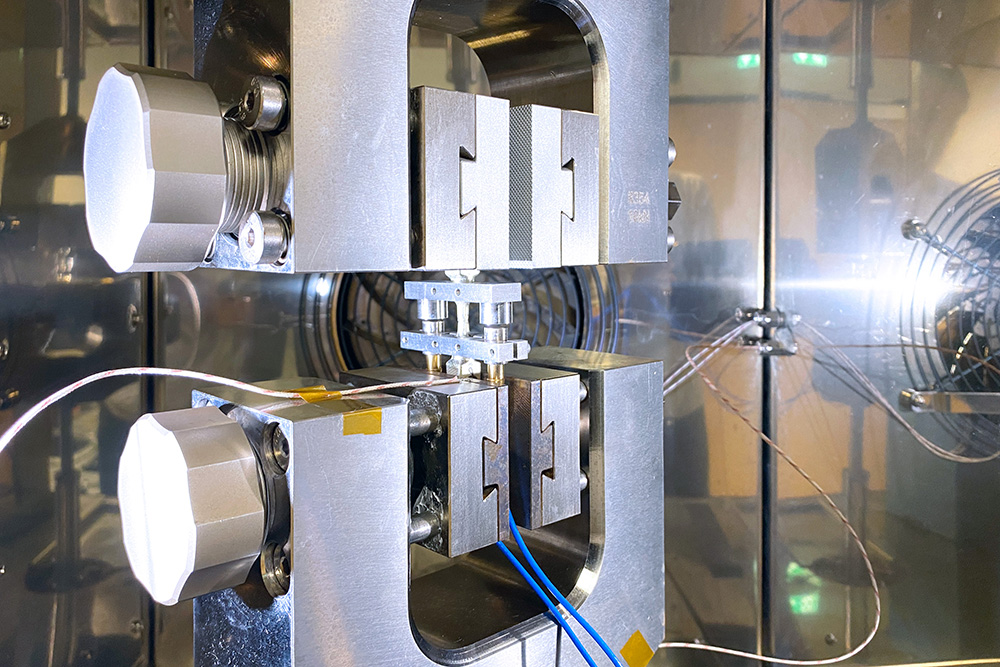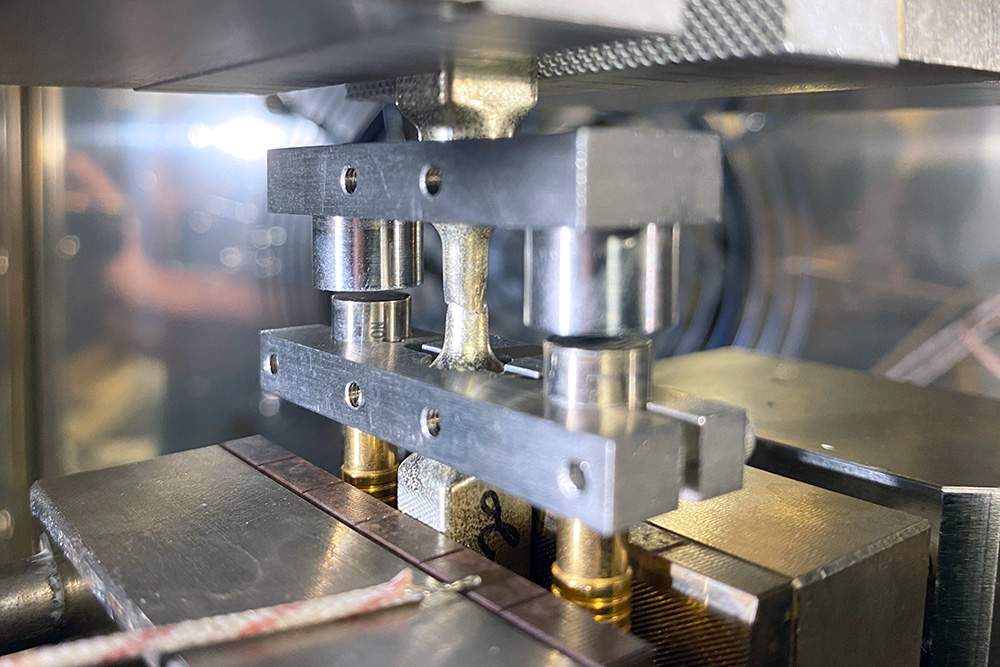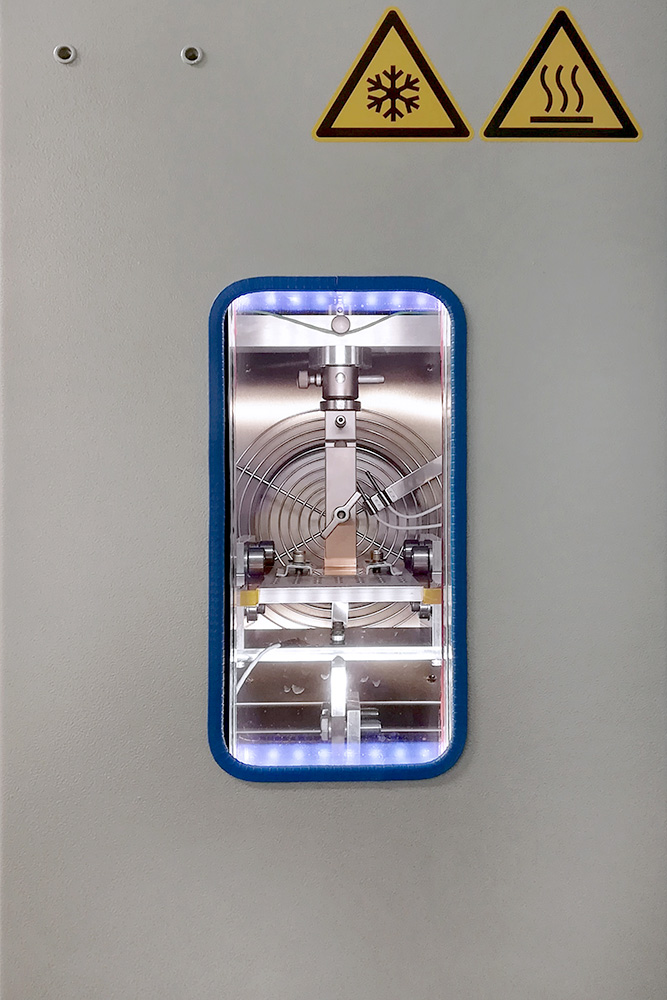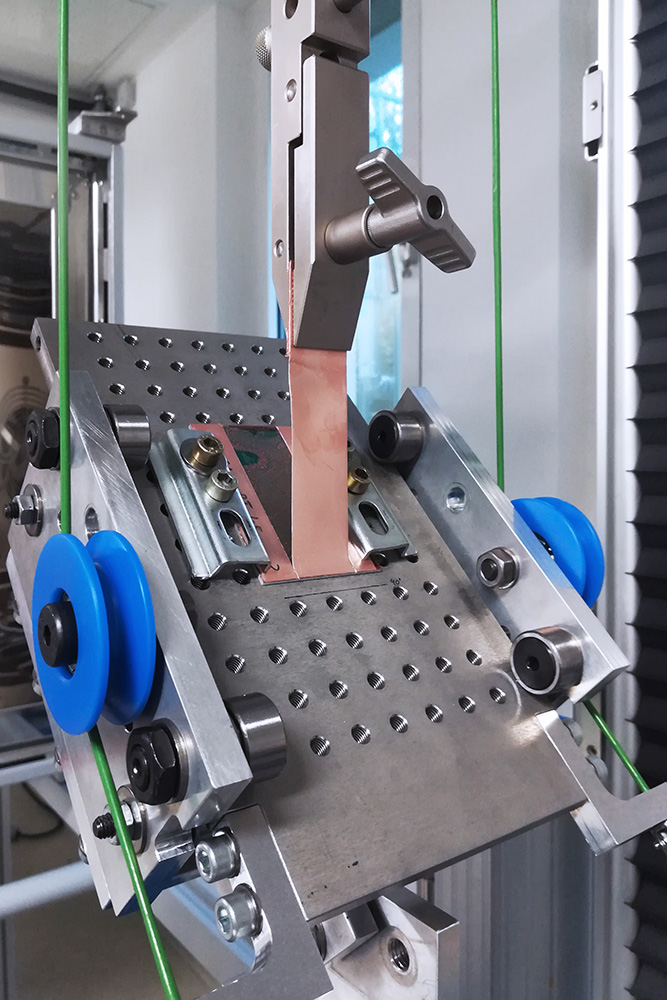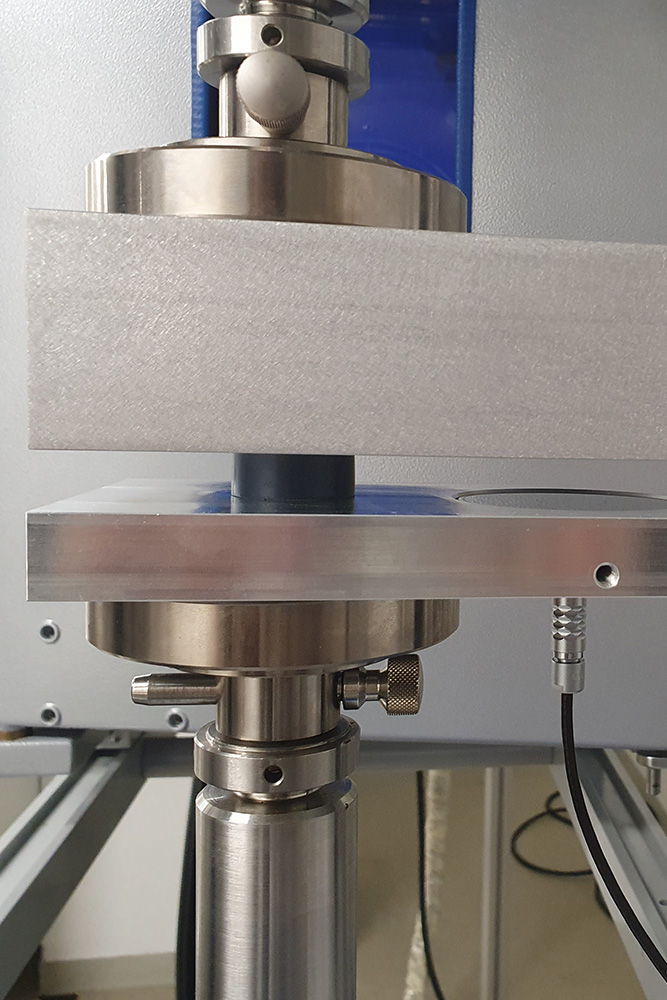Various electro-mechanical testers and test sequences are used to determine mechanical material parameters of the elastic, plastic and viscoplastic deformation behavior of materials used in assembly and connection technology (AVT) (see examples). The aim is to provide mathematically described stress-strain behavior as well as the softening behavior as a function of temperature and time. The mathematical models then are applied for the boundary conditions occurring in the laboratory and field under which the electronics or micromechanical system is to be designed.
- Examples
- Solder alloys
- Solder contacts
- Silver (Ag) sintered contacts
- Copper (Cu) sintered contacts




